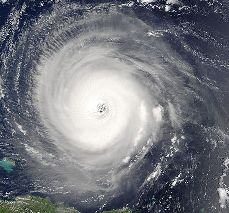Hurricane!

It’s been a long time since a strong hurricane passed through this part of Florida. The last one that hit us hard was Irma, a Category 4 storm, in 2017.
Ian came and went Tuesday and Wednesday with only a minimum amount of damage. At Paradise Palms, we were lucky. A Queen Palm blew over. (It will be righted today.) And a 30-foot Royal Palm basically broke in half. It looks like a huge toothpick. (That one’s a goner.)
The thing about living in a hurricane zone is that every time there is one, the weather channels do everything they can to get high ratings. And that means lots of silly stunts to make it look worse than it is.
Ian was classified as a Category 5 storm. That’s as powerful as a hurricane can get. These monster storms can bring wind speeds of more than 150 miles per hour. But it’s not just the wind speed that determines the potential damage a hurricane can cause. Just as important, sometimes more important, is how fast it moves. It might surprise you to know that slow-moving hurricanes generally cause more damage. That’s because they spend more time in any given area pounding away at buildings and trees. Another big factor is storm surges, which, in areas like ours (just across from the beach) often cause the most damage.
Since 1924, there have been 35 documented hurricanes in the North Atlantic that reached this level. And of those, five hit the United States at Category 5 strength. Each is, in itself, a fascinating story. You can read about them here.
 MarkFord
MarkFord